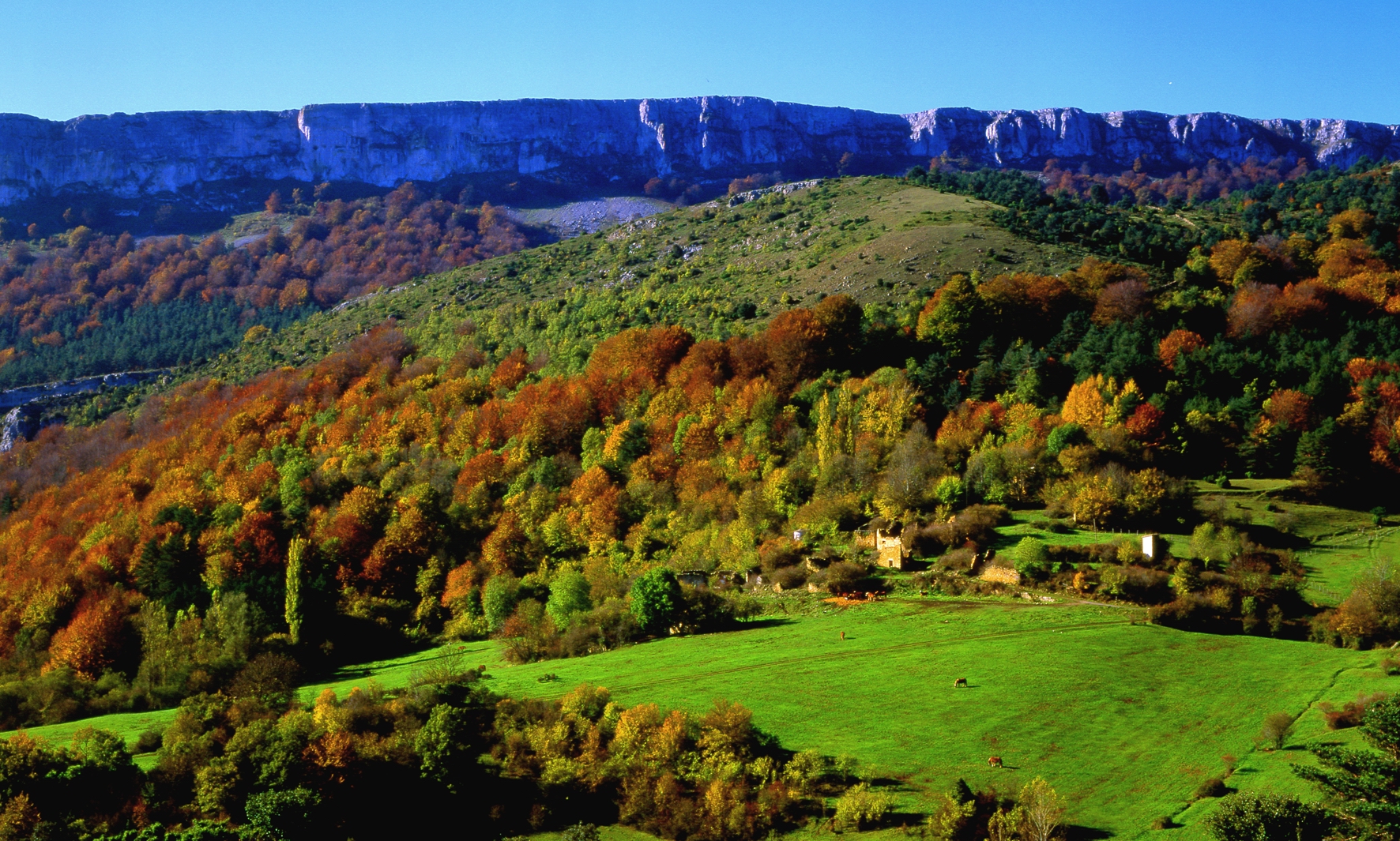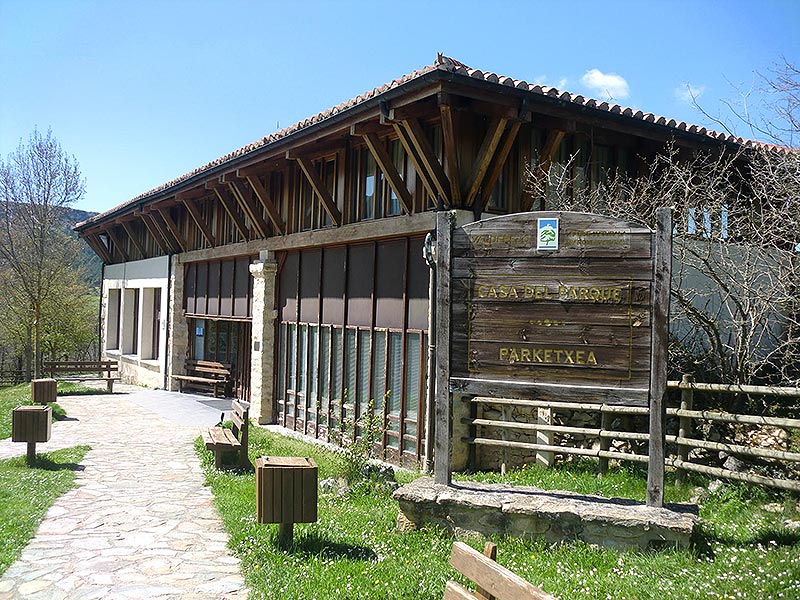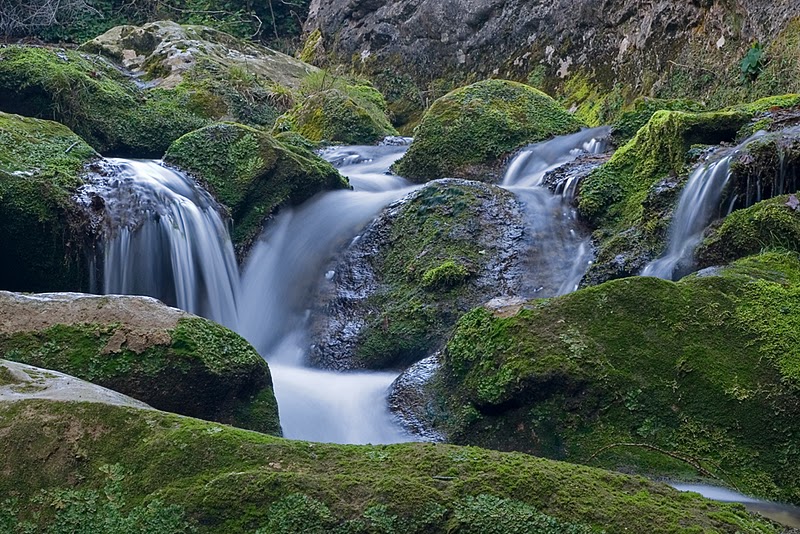
A high and wide valley enclosed by steep hillsides ending in rocky cliffs is probably the best way to sum up the landscape of Valderejo (3418.5 Ha). Declared a Natural Park in 1992, the valley is located in the most western part of Alava, on the boundary with Burgos. It is almost uninhabited, which has favoured the existence of a rich and varied flora and fauna.
The Bóveda Mountain Range and the western stretch of the Árcena Massif enclose and protect this valley, whereas deep into it the River Purón flows through large meadows and plantations. With the passing of years its waters have eroded the mountains of this singular natural area.
Lalastra, the heart of the Park:
We gain access to the park through the Valdegovía Valley from the village of San Millán de Zadornil in the province of Burgos. The road will lead us to the town of Lalastra in the heart of Valderejo, a starting point for the routes and itineraries that the park offers.
The Park House (Parketxea) is a beautiful building made of wood and with large windows that is located on the outskirts of the town. It provides hikers with all the information on park routes, activities and services. Visitors can also drop by the Rural Interpretation Centre, where the history of the valley and the habits and customs of its people are displayed.

In Lalastra, we will also find a recreational area with a playground and picnic area. The village boasts a restaurant and rural tourist facilities, ideal places to get our strength back once we have finished the visit to the park. The mountains that enclose the valley offer different hiking and climbing routes. Those nine itineraries with varied length and difficulties travel across the whole parkland. Most of them cover a short distance, but some link up with others, providing long walks to more experienced mountaineers.


Apart from Lalastra, there are three other rural centres in Valderejo: Lahoz, Villamardones and Ribera. The last two were abandoned several decades ago. An interesting walk could be to visit their ruins.
The human being has dwelled the valley since time immemorial. The traces of that presence are noticeable in the area's cultural and architectural heritage, which accommodates megalithic monuments (the tumulus of San Lorenzo, the monolith on Mount Lerón) as well as churches and hermitages of different periods. There are remains of a road from the Roman period, and in Ribera for example, stands a Romanesque church with unusual medieval paintings.